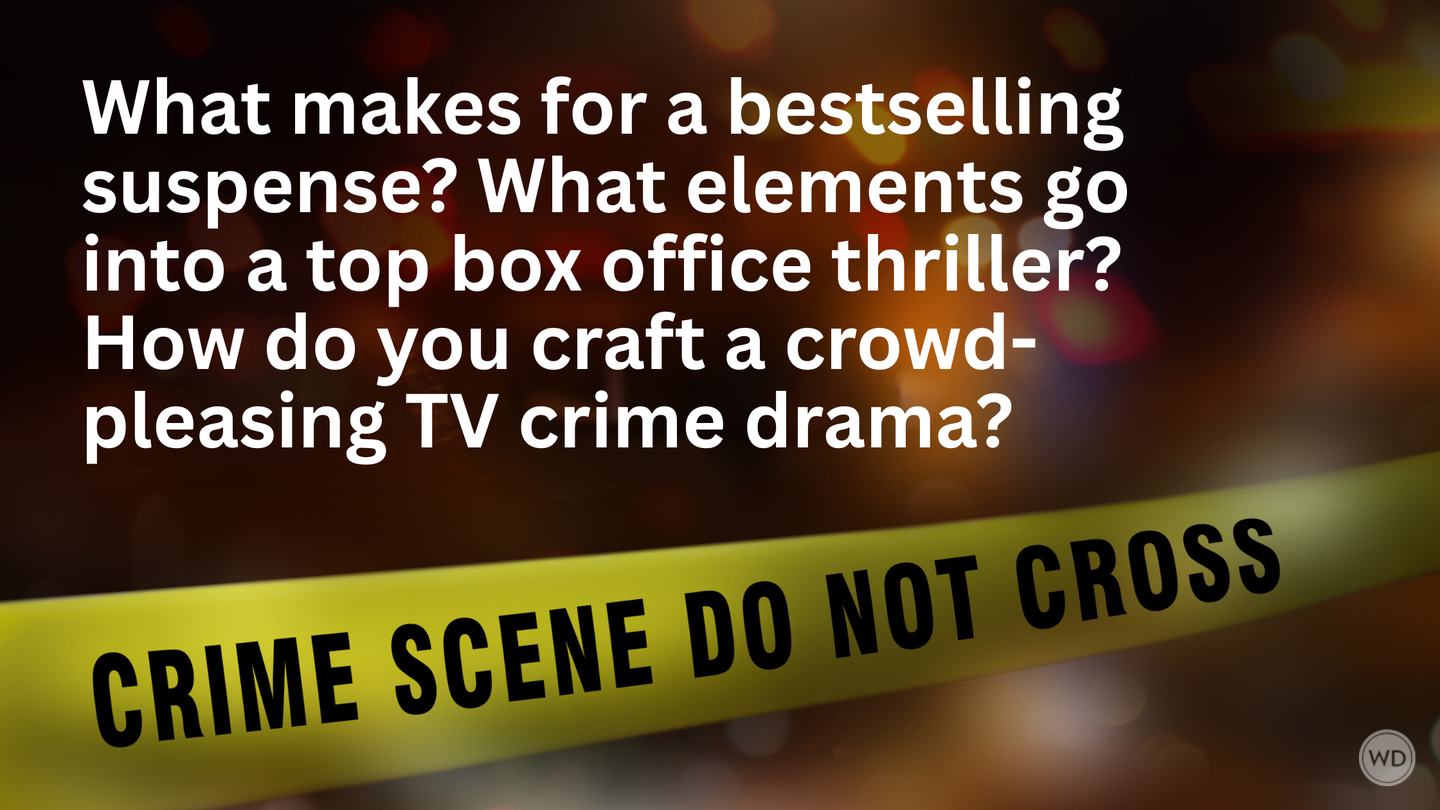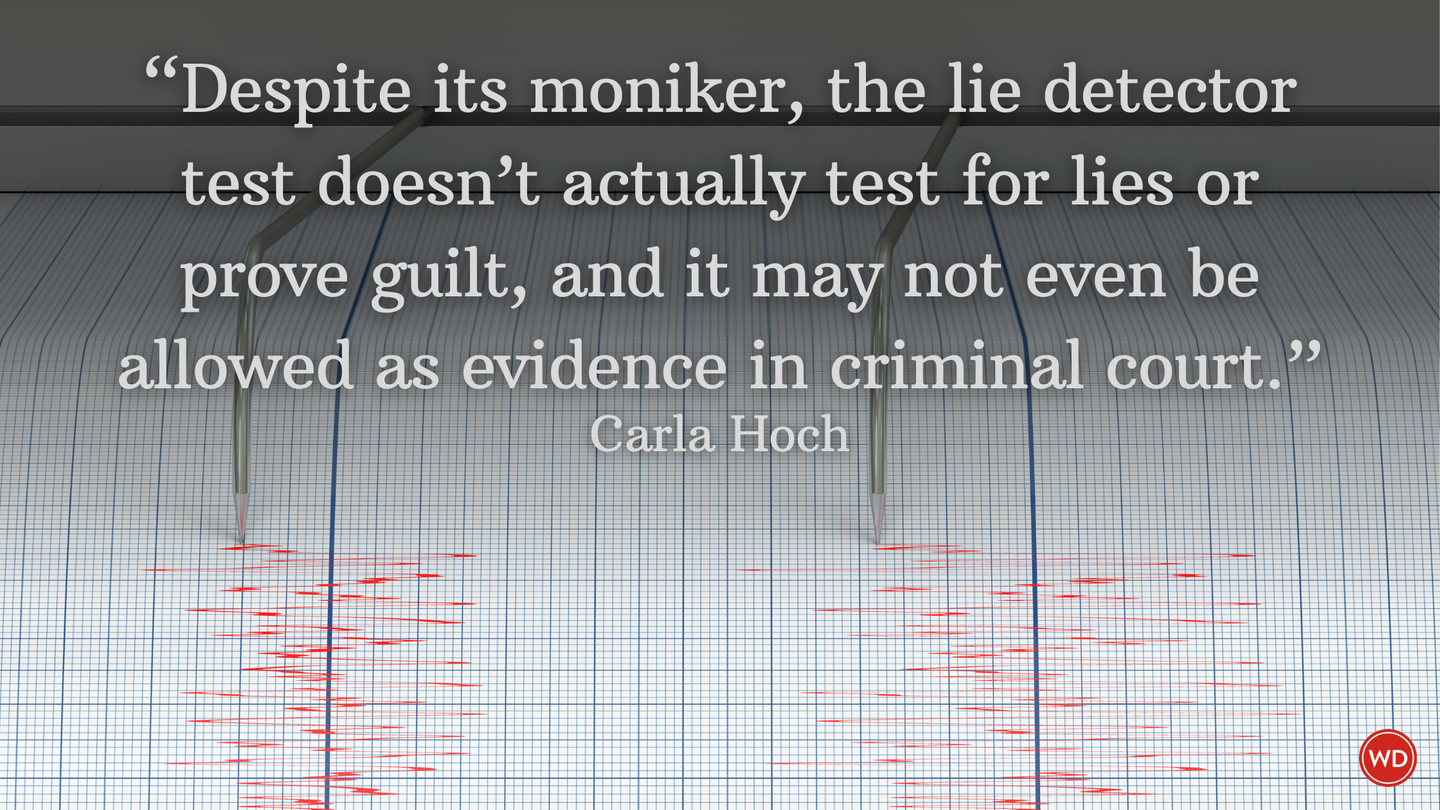Is My Killer a Psychopath or a Sociopath? (FightWrite™)
This month, trained fighter and author Carla Hoch discusses the differences (and similarities) between a psychopath and a sociopath, differentiating between organized offenders and disorganized offenders, and more.
If you are trying to decide whether the killer in your manuscript is a psychopath or sociopath, this post will make your writing life easier. Your character is both a psychopath and sociopath. And neither one is a diagnosis.
Psychopath and Sociopath
The terms psychopath and sociopath are interchangeable. The term psychopath first appeared in the late 1800s. It was replaced by the term sociopath in the 1930s. The two were used interchangeably by clinicians with some favoring the latter as psychopathy was often confused with psychosis by laymen.
In 1980, the DSM-3, the third edition of the Diagnostic and Statistical Manual used to diagnose mental health maladies, introduced a broader diagnosis of Personality Disorder that included traits of psychopathy/sociopathy. Today, these traits are found among the 10 diagnosable personality disorders in the DSM-5-TR. Neither psychopathy or sociopathy are a diagnosis. They are a set of personality traits without differentiation and neither word is found in the DSM-5-TR.
So, put away the multitude of info graphics you’ve put on your desktop reminding you of the differences between two terms because clinically, there is no difference. Also, don’t worry, you don’t have to know the intricacies of each of the 10 personality disorders. Instead, consider whether your killer is an organized or disorganized offender.
Organized and Disorganized Offenders
Forensic/criminal psychologists, as well as criminal profilers, have compiled a list of characteristics that distinguish organized from disorganized criminal offenders. The characteristics are gleaned from known killers of both categories and are used as a reference to begin the process of profiling an unknown assailant. That said, the start of a profile is not the final product. Both types of killers can deviate here and there from the compiled characteristics, especially in terms of intellect. And some killers, such as Aileen Wuornos, can fall distinctly between the categories.
Organized Offenders
Personal Characteristics
Organized offenders, such as Ted Bundy, Joel Rifken, and Dennis Rader, tend to be male with a masculine image. Quite often they were raised in a middle-class environment, are of higher birth order, and the victim of childhood abuse1. They tend to have average or above intelligence and are socially adept. They are sexually competent, attractive, and charming. It is not uncommon for them to verbally seduce their targets. They are occupationally and geographically mobile, and may live with a partner. They have a controlled mood during their crime and a controlled demeanor overall. Their crime scene is likely squeaky clean of evidence.
Post-Offense Behavior
To the organized offender, getting caught is a game. They keep up with the news regarding their crime, are police groupies and may call in to offer information about the incident. They are very difficult to catch as they are meticulous at covering their tracks. Also, their crimes tend to have three distinct areas: approach, kill, and disposal. They are known to move the victim’s body several times and dispose of it in a way that advertises the crime.
Disorganized Offender
Personal Characteristics
Disorganized offenders, like Jack the Ripper and Jeffrey Dahmer, tend to be male and victims of childhood trauma such as neglect and physical/sexual abuse3. Often, they are neither socially nor sexually competent and have poor hygiene. Their education level and intellectual ability tend to be low. They generally don’t have stable transportation, so their kills tend to be near where they live. They are anxious during the crime, overwhelm their victims with violence, and tend to leave the body in plain view at the scene. They are also known to leave plenty of evidence behind out of adrenaline-fueled carelessness. That is not to say that they are quickly nor easily caught. Some of the most prolific disorganized offenders evaded capture by more than a decade.
Post Offense Behavior
The disorganized offender may change their address or place of work after the crime1. Both, however, may still be near the scene of the offense as this type of offender likes to revisit where the crime took place. They may keep a diary or clippings related to the crime and attend a memorial for the victim. They may even go so far as to place an “in memoriam” in the local paper.
Amazon
[WD uses affiliate links.]
What This Means for Your MS
How can this help you in writing your manuscript? Placing your character into one of the two killer categories will save you time in creating a backstory. You know that if your killer is calculated with their crime, they could have had a solidly middle-class upbringing and were voted Most Charming in high school.
You could also use the character traits to give more details to your killer. If their crime is frenetic and poorly planned, its reasonable that their clothes are often dirty and they have body odor. Little additions like that can bring a character to life in a way their behavior can’t.
A Killer Reference Tool
There are enough well-researched and verified traits of organized and disorganized killers to fill a small but creepy library. I found nearly 1,000 books on criminal profiling with little effort. The traits I’ve listed barely scratch the surface but are hopefully enough to help you get on the right path of character killing. In my book, Fight Write, Round Two, I have infographics that give these characteristics, and more such as the type of criminal interview that is best for each type of offender. For example, if your character is a disorganized killer, your police characters will want to bring them for questioning at night.
I hope this was helpful and saves you time in creating your characters. The more time you save in one aspect of your work, the more you are afforded in others. If you write mystery or thriller, check out the table of contents of Fight Write, Round Two. There’s an entire section just for you. You’ll learn how to diagram a crime scene, which personality disorder your character might have, and why during criminal interviews police often carry in a file folder thick with papers. Writer’s Digest gives the book a thumbs up. And don’t forget that the FightWrite™ blog is out there for you free of charge and chock full of killer tools to help your scenes of action, violence and crime be the best they can be.
Until the next round with FightWrite™ on the WD blog, get blood on your pages.
Carla Hoch is the award-winning blogger of FightWrite® and author of the Writer’s Digest book Fight Write: How to Write Believable Fight Scenes. She is a WDU instructor who regularly teaches on the craft of writing fight scenes, action, and violence as well as the mechanics of fighting for writers. Carla is a world champion jiujitsu player and has experience in almost a dozen fighting styles. She lives and trains outside Houston, Texas.







